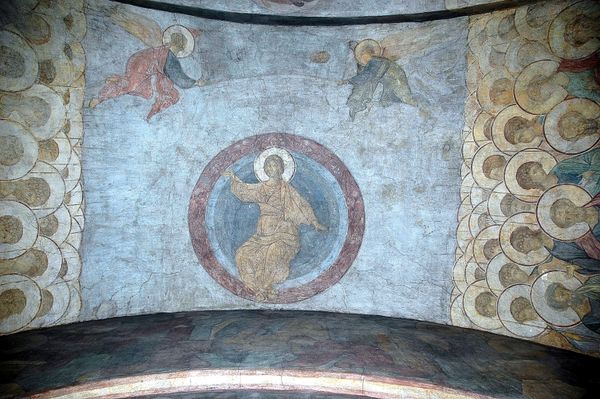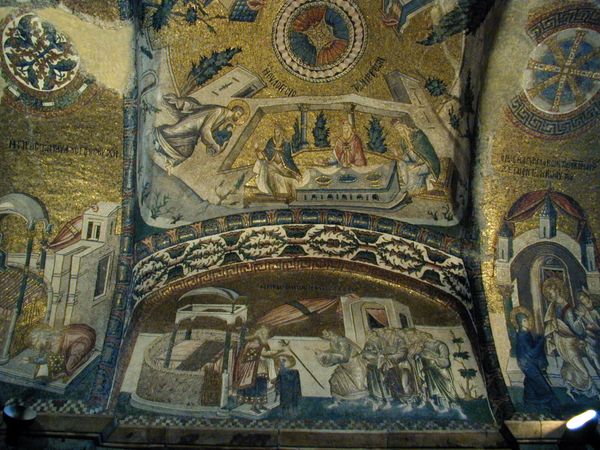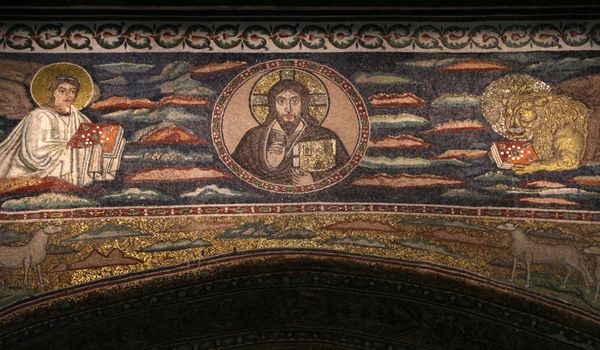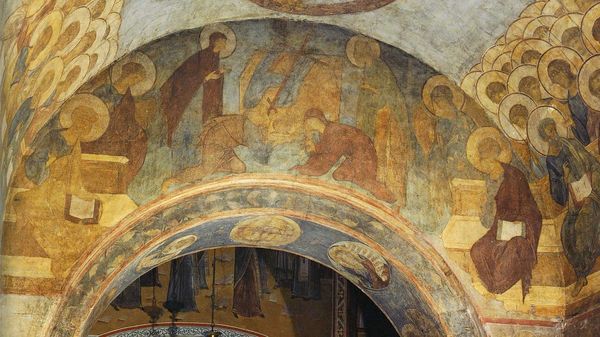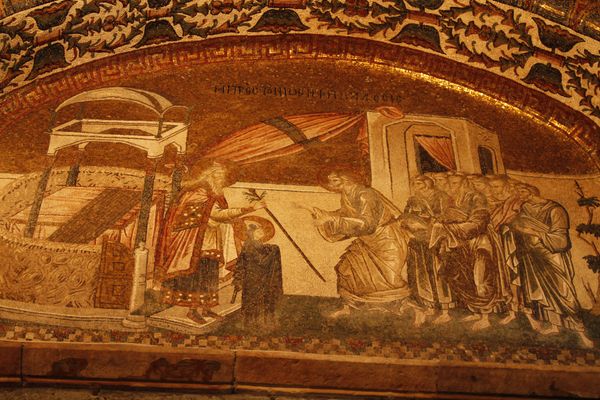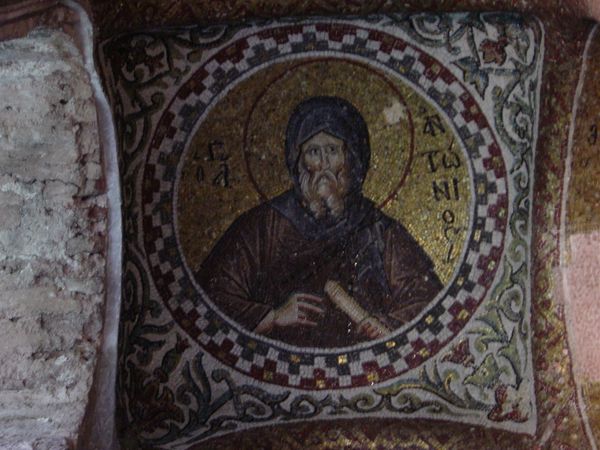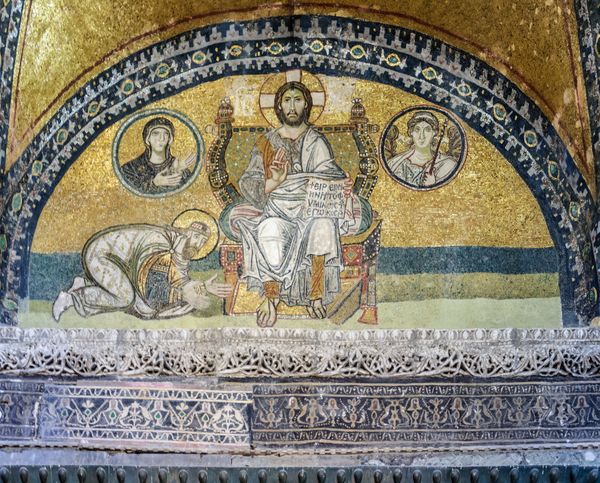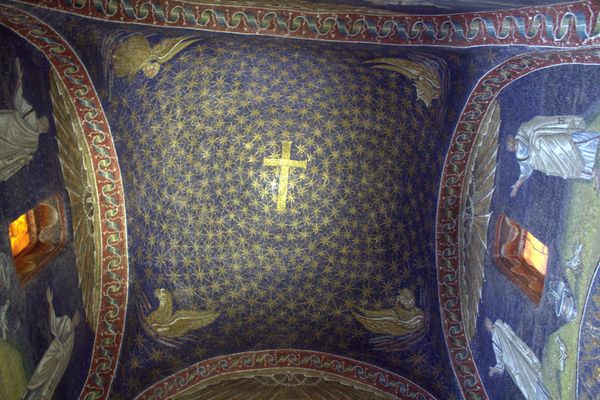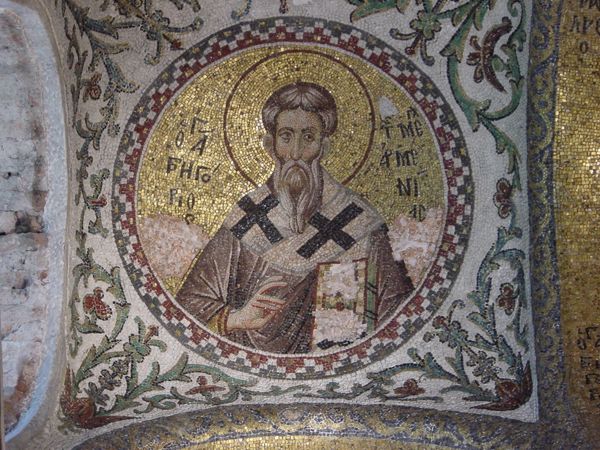
mosaic
#
mosaic
#
byzantine-art
#
narrative-art
#
holy-places
#
figuration
#
traditional architecture
#
history-painting
Copyright: Public domain
Curator: Stepping into the Mausoleum of Galla Placidia in Ravenna, Italy is a truly awe-inspiring experience. We're drawn to a particularly striking mosaic dating back to around 425 AD titled "The Martyrdom of St. Lawrence." Editor: The first thing that grabs me is the shimmering quality. The light catches the tesserae and makes the whole scene glow, even the rather grim elements. Curator: Absolutely. The mosaic is strategically placed to be illuminated by the window just above the fiery gridiron. It highlights the importance of St. Lawrence within the early Christian church as he faces martyrdom. Editor: You have this sort of material paradox. These tiny, deliberately placed pieces of stone, glass, and gold forming something incredibly potent, even violent. Think about the craft, the sheer labor to produce this. Curator: And how that labor served the Empress Galla Placidia, for whom the mausoleum was likely constructed. She wielded tremendous power, and these mosaics would have reinforced both her piety and authority through potent biblical imagery. Note the depiction of St. Lawrence. It’s classic Byzantine, but notice the careful detailing, especially in the folds of his robes. Editor: I'm more interested in that gridiron, that instrument of torture so vividly rendered. You can almost feel the heat radiating. Also that cabinet with the scrolls gives a rare material insight to the tools of knowledge production during that time. The very stuff of learning almost discarded by the new religion. Curator: Those "scrolls" are actually the Gospels; he’s safeguarding the sacred texts even amidst the violence. This narrative was deployed as a propaganda tool that illustrates not only the glory of St. Lawrence’s sacrifice but also reminds the visitors of their obligation to the faith. Editor: Right, to be willing to lay down their resources, their materials and labors, for the glory of the early church. It is pretty effective visual rhetoric. Curator: Seeing this mosaic reminds us how deeply art can be interwoven with power, devotion, and narrative construction, shaping our understanding of history. Editor: Exactly. It is important to not lose sight of how materiality and context intertwine and make art so evocative, particularly within its own cultural moment and especially today.
Comments
No comments
Be the first to comment and join the conversation on the ultimate creative platform.
